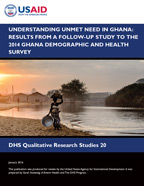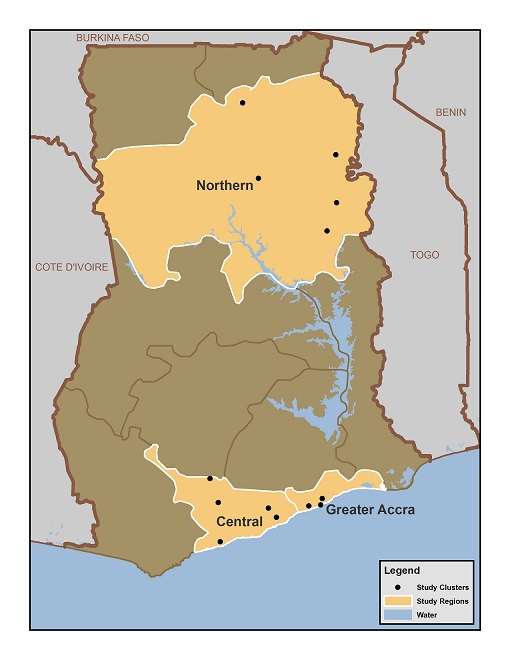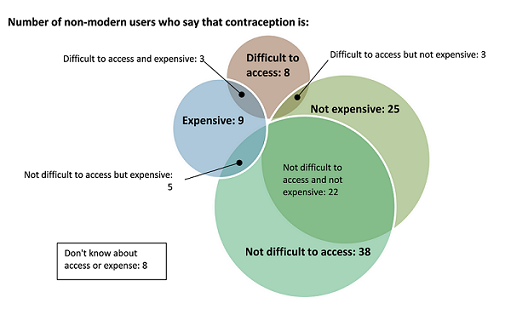A Closer Look at Unmet Need in Ghana

View from Elmina Castle in Cape Coast Ghana. © Cameron Taylor/ICF International
For over 30 years, data from DHS surveys have been widely used to assess use of family planning, and monitor family planning programs around the world. DHS data are the gold standard for quality, but nuanced information related to fertility intentions and family planning use is often challenging to collect in a large-scale quantitative survey. Information from in-depth interviews with DHS respondents can help us understand and interpret survey results.
 DHS recently published a follow-up study to the 2014 Ghana Demographic and Health Survey (GDHS). The study reflects an evolving model of qualitative and mixed-methods research within The DHS Program: projects linked to the DHS survey process itself, rather than fielded separately. At the heart of the study was the opportunity to speak with a sub-sample of DHS respondents a few weeks after their DHS interview, which gives us some insight on data quality and reliability when we re-ask a few of the same questions.
DHS recently published a follow-up study to the 2014 Ghana Demographic and Health Survey (GDHS). The study reflects an evolving model of qualitative and mixed-methods research within The DHS Program: projects linked to the DHS survey process itself, rather than fielded separately. At the heart of the study was the opportunity to speak with a sub-sample of DHS respondents a few weeks after their DHS interview, which gives us some insight on data quality and reliability when we re-ask a few of the same questions.
But the real purpose of the study was to help us make sense of quantitative data. What does it mean when women say that they want to delay or space their births but that they are not using family planning? Programmatically, there is an important distinction between women who may be classified as having an unmet need for family planning versus women who are willing and ready to contracept. The reasons why a country with a relatively strong family planning program such as Ghana would have one of the continent’s highest levels of unmet need are not something we can always understand very well through the existing questions asked in large-scale surveys. A small number of systematically planned in-depth interviews can help us understand the individual narratives behind survey answers that give rise to the classification of unmet need.

Approximate locations of the final 13 clusters selected for the follow up study. Cluster locations have been randomly displaced to ensure respondent confidentiality.
Following up with DHS survey respondents was ethically and logistically complicated. We had to first get women’s consent during the initial interview for re-contact, use a computer program to select eligible women, and then try to re-identify women using an approximate address, structure number, name of head of household, and relationship to head of household. Once we approached original respondents we then had to start the process of obtaining consent and scheduling an interview anew. Fieldwork was conducted by the Institute of Statistical, Social, and Economic Research (ISSER) at the University of Ghana, Legon. Ghana Statistical Services, which implemented the GDHS, helped ISSER interviewers re-locate original households and randomly audited the follow-up interviews for data quality.
We re-asked some of the same questions posed by the GDHS and then inquired about any discrepancies. Did the respondent think that there was an error in transcription, or had her circumstances changed in the interim period between surveys?

Perceived cost and access barriers to contraception among follow-up respondents who were not using a modern method of family planning.
Key findings from the study include: women seem to underreport traditional method use, intentional abstinence as a method of family planning is not well-captured by our surveys, husbands and partners have both a positive and a negative influence on use, women are most concerned about menstrual irregularities caused by hormonal methods, and opposition to modern methods among non-users is stronger than apparent from survey data.
You can download the full study, “Understanding Unmet Need in Ghana: Results from a Follow-up Study to the 2014 Ghana Demographic and Health Survey” from The DHS Program website.

